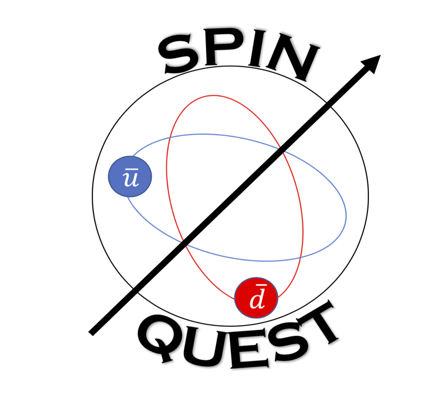Experimental High Energy Particle and Nuclear Physics
Drs. Stephen Pate-Morales and Vassili Papavassiliou, with their postdocs and students, have a long-running program of experimental study into the internal structure of the nucleon, especially concerning the spin structure. In the past they have been involved in the PHENIX Experiment at the Relativistic Heavy-Ion Collider at Brookhaven National Lab, the G0 Experiment at Jefferson Lab, the HERMES Experiment at DESY (in Hamburg, Germany), and the NuSea Experiment at Fermi National Accelerator Laboratory. Currently they are involved in two experiments at Fermilab.
The MicroBooNE Experiment 
The SpinQuest Experiment 
Theoretical High Energy Particle and Nuclear Physics
Theoretical research in nuclear physics at NMSU is spearheaded by Drs. Michael Engelhardt and Matthew Sievert. Our research uses a variety of techniques -- including mathematical modeling, perturbation theory, and high-performance computing -- to study the properties of the strong nuclear force, quantum chromodynamics (QCD).
We study the complex, emergent properties of QCD across a range of energy and length scales. In cold nuclear matter, QCD dictates the spin-orbit physics in the proton and the high-density physics in nuclei. These quantum structures which emerge from QCD will be probed with unprecedented accuracy at the next-generation Electron-Ion Collider when it finishes construction in the coming decade.
Likewise, at high temperatures, QCD describes the melting of the proton into an exotic Quark-Gluon Plasma, a phase of nuclear matter in which thermal screening allows the fundamental constituents of QCD -- quarks and gluons -- to flow freely as a nearly "perfect" fluid. The Quark-Gluon Plasma characterized the early universe shortly following the Big Bang, and it can be experimentally recreated at collider facilities like the Relativistic Heavy Ion Collider (RHIC) and the Large Hadron Collider (LHC).
Here at NMSU, Dr. Engelhardt is an acclaimed expert in the theory and implementation of Lattice QCD, which uses high-performance computing networks to directly compute nonperturbative matrix elements in QCD. His work includes the development of novel applications of Lattice QCD to study the spin-orbit structure of the proton in 3 dimensions. Dr. Sievert is an expert in the theory of QCD at high energies and its applications to proton structure and jet production in the quark-gluon plasma; his expertise includes the physics of spin at high energies, the initial stages of heavy-ion collisions, and the quenching of jets in a nuclear medium.
Together, we support several graduate students as Research Assistants. We organize a Nuclear Physics Journal Club (thus far held ~biweekly in the Spring semesters) to discuss papers and recent developments. There may also be opportunities for undergraduates to participate in research projects, particularly over the summer. Please feel free to contact us with any questions.
